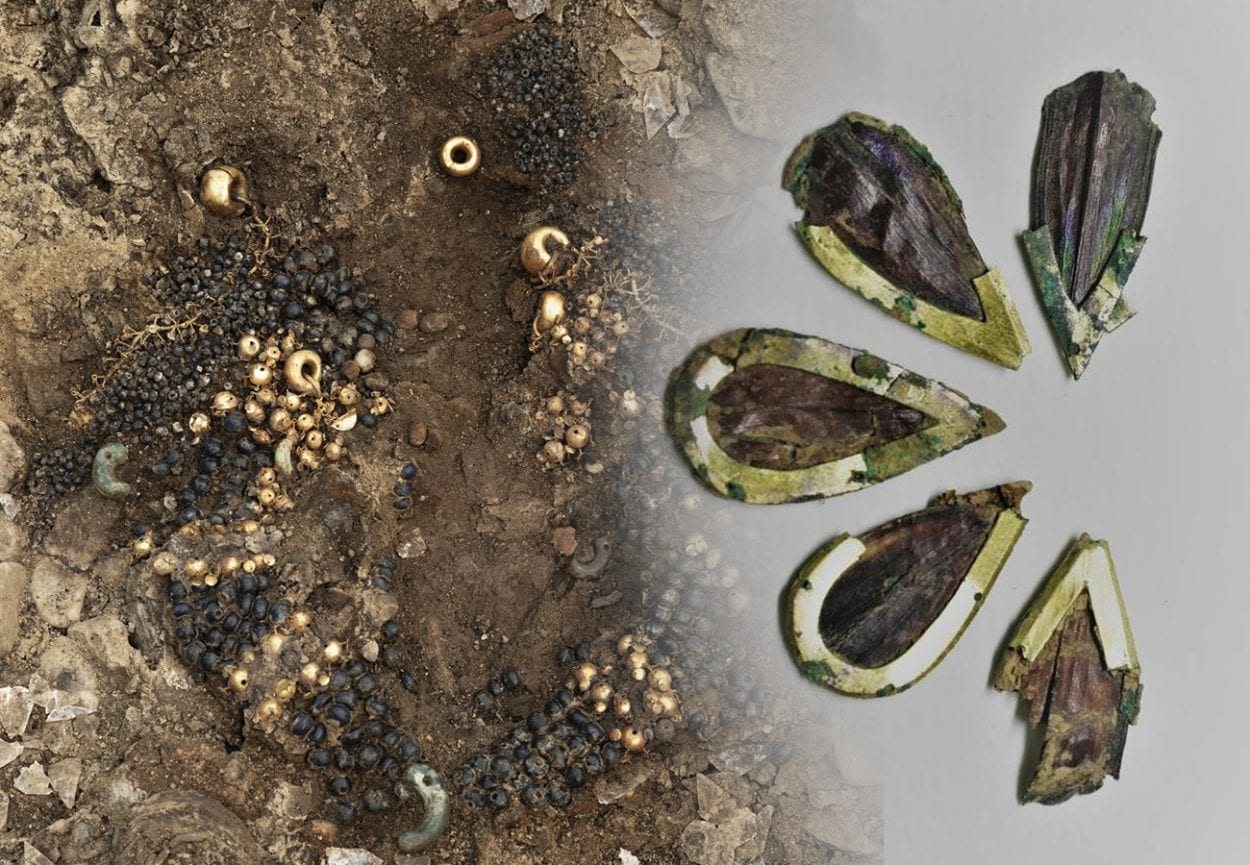Archaeologists have discovered hundreds of grave goods in the tomb of a Silla Princess, buried in the city of Gyeongju, in the North Gyeongsang Province of South Korea.
Silla was a kingdom founded by Bak (Park, Pak) Hyeokgeose of Silla, which emerged in 57 BC as one of the Three Kingdoms of Korea alongside Baekje and Goguryeo.
Silla was ruled by the Gyeongju Gim (Kim) dynasty for 586 years, the Miryang Bak (Park) for 232 years, and the Wolseong Seok for 172 years, until the Kingdom’s collapse in AD 935 during the reign of the 56th ruler, Gyeongsun of Silla.
The discovery was made during ongoing excavations by the Gyeongju division from the National Research Institute of Cultural Heritage (NRICH), of Tomb No. 44 in the coastal city of Gyeongju, the former capital of the Silla kingdom.
Excavations first started in 2014, having identified the tomb within a medium sized burial mound containing a stone-piled wooden chamber (now absent of human remains having deteriorated away to dust), which archaeologists believe dates from the 5th century AD.

The latest discoveries consist of a gilt-bronze crown, gold chest ornaments, gold earrings and pendants, gilt-bronze ornaments, gold and silver bracelets, an ornamental silver knife, and hundreds of stones from the strategy board game Baduk (also called Go). Also, among the grave goods were 50 pieces of mica, a mineral that was believed to be an ingredient for youth and longevity in Taoism.
An official from NRICH told the KoreaTimes: “The height of the buried person is estimated to be about 150 centimetres, and the small size of the gilt-bronze crown and other accessories indicate that the tomb is for a woman. The person also carried an ornamental silver knife, instead of an adorned dagger typically found in kings’ tombs, suggesting that the person could be female.”
Alongside the burial were also various golden-edged jewelled beetles used to decorate the deceased. The beetles are normally only found in burials of the Silla royalty or elite, suggesting that the burial, along with the high-status grave goods was that of a Royal Silla Princess.
Header Image Credit : Gyeongju National Research Institute of Cultural Heritage





